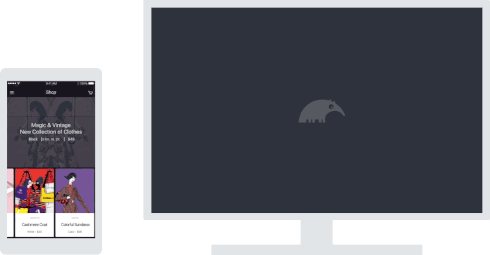
A newly launched company, Bugsee, wants to help developers build and maintain bug-free apps. As part of its launch, it announced a bug reporting and crash analytics tool for mobile app developers that captures video of user interactions so developers can see what leads to bugs or crashes.
“We think of Bugsee as the flight recorder or black box for your iOS and Android apps,” said Alex Fishman, CEO and cofounder of Bugsee. “It’s a powerful investigative tool for fast and efficient debugging and code fixing. Everything is logged at all times, and the problematic sequence that led to the bug or crash is captured on video for easy identification and quick resolution.”
Google starts testing Android Instant Apps
Google is beginning to test a few Instant Apps to Android users for the first time. Android Instant Apps were first previewed last year at the company’s developer conference. They allow users to run Android apps without installing them.
The apps available for test include BuzzFeed, Periscope, Viki and Wish. According to the company, user feedback will help it expand the experience to more apps and users.
Developers who want to build an Instant App will need to update existing Android apps to take advantage of the new functionality.
AOL launches new self-serve capabilities
AOL’s programmatic mobile supply-side platform is getting new capabilities designed to empower app developers and provide transparency and control. ONE by AOL: Mobile enables developers to monetize across every device and format with a single SDK. With the new self-serve platform, developers can manage and control ad serving, network mediation and real-time bidding, as well as take advantage of a suite of transparent reports and controls.
“Many app developers rely on more than 15 different monetization platforms and SDKs,” added Matt Gillis, senior vice president of publisher platforms at AOL. “Managing and integrating all of these technologies into their apps is time-consuming and resource-intensive. With ONE by AOL: Mobile, plus our innovative new self-serve features, we are delivering a comprehensive solution for monetization built for mobile workflows that makes it easier to work with partners and streamline the process. ”
Platform9 introduces Managed Kubernetes service, Fission framework
Platform9 announced the general availability of its Managed Kubernetes service, an infrastructure-agnostic, SaaS-managed offering.
Managed Kubernetes is deployed and managed as a SaaS solution, on-premises and in the cloud. It is fully integrated and runs side-by-side with OpenStack. Platform9 also introduced Fission, an open-source framework built on Kubernetes. Fission can provide a serverless interface to leverage Kubernetes, which means DevOps teams can write REST-based application back ends.
“SaaS-managed delivery makes Kubernetes accessible to a much larger audience at a time when many development teams are committing to microservices as their cloud-native development paradigm,” said Sirish Raghuram, CEO of Platform9.
Zephyr releases ZAPI add-on in the cloud
Zephyr announced the release of ZAPI in the cloud, an add-on that delivers requests on the JIRA platform to integration automation and Continuous Integration tools, according to the company.
The add-on allows access to Zephyr for JIRA to read/write testing related data via REST APIs, and this can be used to query tests and update results, said the company. Teams can also use ZAPI to integrate to automation or Continuous Integration tools with supported REST APIs.
ZAPI is available on the Atlassian Marketplace and will require Zephyr for JIRA to be installed. Developers and teams can learn more about the add-on here.





